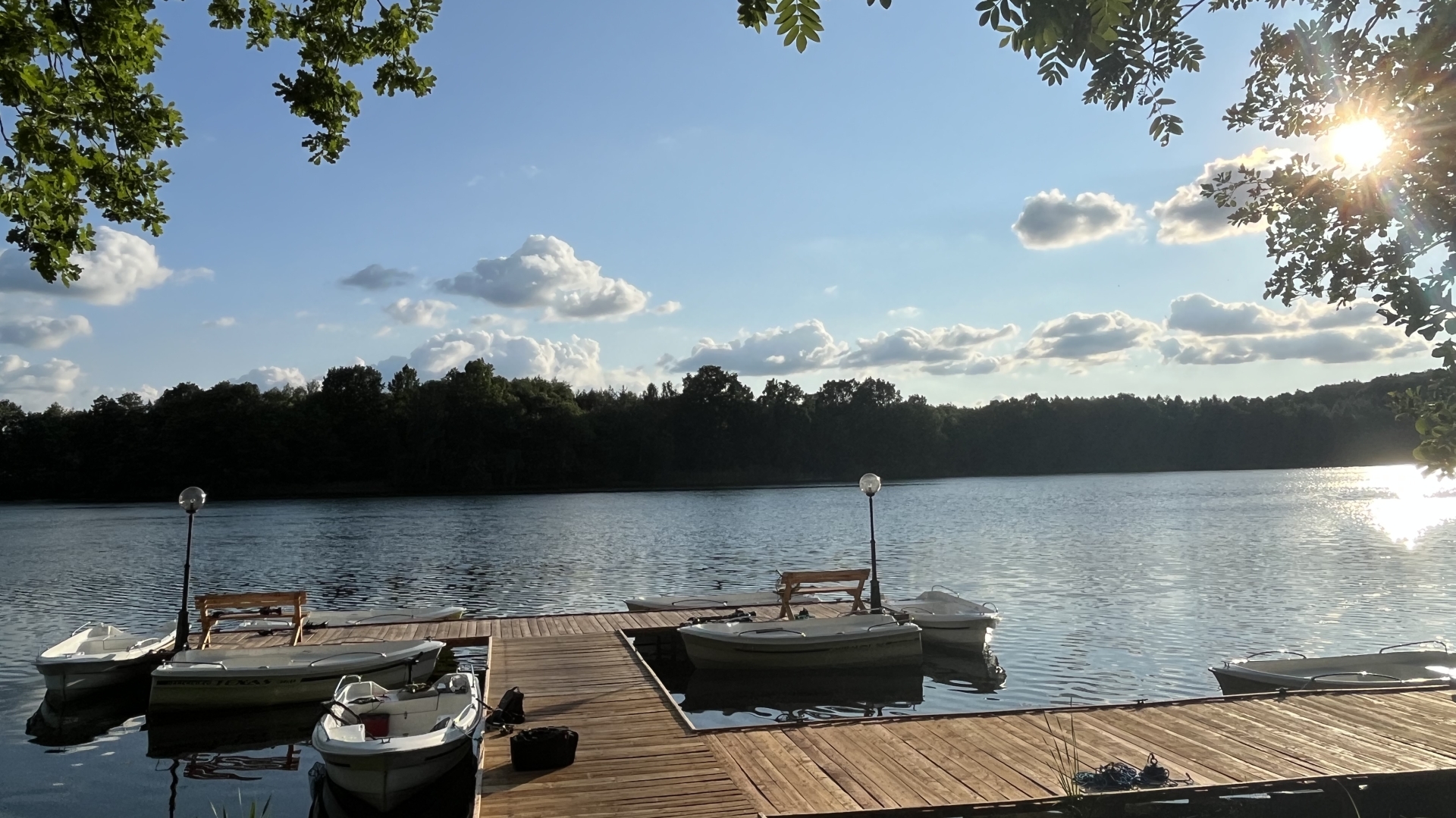

Lake Piaseczno lies within the Polaszkowski Protected Landscape Area. It includes a number of
picturesque trough lakes connected by Mała Wierzyca river. The largest part of the surrounding
landscape is an undulating moraine plateau. There are also several forests dominated by beech and
oak. Next to the fishery is the “Orle on Duże Lake” forest reserve, with a group of 200-year-old oaks-
an ideal spot for family walks.
Piaseczno is a good base for excursions farther afield to:
- Stare Polaszki. A well-preserved Skórzewski mansion from 1748, and a church erected in 1750, with
furniture dating back to the 18th century;
- Stara Kiszewa and Kiszewski Castle. The Kissow village was mentioned for the first time in 1269. The
ruling (since 1281) Jankowic family sold it to the Teutonic Knights for a life annuity in 1316. The
Knights built a defensive castle at the bend of the river, to serve as the order's seat in the region. In
1454, the citizens of Gdańsk captured and destroyed the fortress to erase all traces of the rule of the
Teutonic Knights. Nowadays, Kiszewski Castle consists of a number of buildings some 3 kilometres
southeast of Stara Kiszewa. The only remnant of the Teutonic fortress is a gate and tower, both
thoroughly rebuilt in the 17th century;
- an African ostrich farm in Garczyn. The ostrich farm-the first one in Poland-was founded in July
1993. Currently about 100 ostriches of different ages live on the farm. A visit is always a great
adventure for the children but not only for them, partcularly if you feel like a dish of scrambled ostrich
eggs - enough to satisfy even the most voracious appetite;
- the Museum of the National Anthem in Będomin. In the 18th century, Będomin belonged to Piotr
Wybicki. The manor house has been preserved, in which Józef Wybicki was born on 29 September
1747. Wybicki was a diplomat and envoy, who helped General Henryk Dąbrowski raise the Polish
legions in Italy. He wrote a song for them in 1797, which has become the national anthem of
Poland.The manor house is currently occupied by the Museum of the National Anthem. The exhibition
tells the story of the life of the author of the anthem, his times and his “Dąbrowski's Mazurka”. It is the
only museum of this kind in Poland;
- an open-air railway museum in Kościerzyna. The exhibits include old steam locomotives and railway
cars, as well as diesel and electric locomotives no longer in use. Get on board and fulfill your childhood
dream of becoming a locomotive driver!
- the Museum - Kashubian Ethnographical Park in Wdzydze Kiszewskie. The oldest Kashubian
museum and the first open-air museum in Poland, founded in 1906 by Teodora and Izydor Gulgowski.
Fine windmills, forges, saw mills and Kashubian farms entice visitors to wander around the museum and
if you grow weary you may enjoy a meal and relax at the old inn;
- a Calvary in Wiele. The construction of the Calvary on the shores of the lake begun in 1915 by Józef
Szydzik, a priest from Wiele, and was completed ten years later. Today it is a favourite spot for family
outings, guaranteed to leave you with unforgettable impressions;
- Stone Rings in Odry. Scattered in a pine forest are twelve stone rings, from 15 to 33 metres in
diameter. Next to them are over twenty burial mounds of settlers from Gotland, who invaded Pomerania
in the 1st and 2nd centuries. The site is not only picturesque, but reputed to have magical powers, too;
- Kartuzy. The city vies with Kościerzyna for the status of the Kashubian capital. Its most precious
historic monument is a must-see Carthusian church from the turn of the 14th century. For the
Kashubian folklore you should visit the Kashubian Museum;
- A Castle in Gniew. Works on the castle began in the early 1280s and was completed in several stages
by the mid-14th century. The main brick convent house was erected in the Gothic style, its thick outer
walls resting on massive, high foundations of irregular granite stones. Jousting tournaments are held
each year in the vicinity of the castle, while medieval feasts are the main attraction of the castle itself;
- the Pelplin Sanctuary. A 14th-16th century cathedral of exquisite shape, with a sumptuous northern
portal. The richly furnished interior includes items dating from the 14th-20th centuries, the most
imposing among them being the main altar, dating from 1623-40, and several side altars, ornamented
with sculptures and paintings, as well as Gothic and Baroque stalls, and countless objects made by
artisans: goldsmiths, weavers and others. The partly preserved monastery was originally built in the 13th
and 14th centuries, and later rebuilt; the chapter house, cloisters and several halls are the oldest parts
extant. Currently the monastery houses numerous paintings and sculptures, while the library boasts a
Gutenberg Bible, one of only 45 surviving copies, as well as many old prints and manuscripts dating
back to the 12th-16th centuries.



























